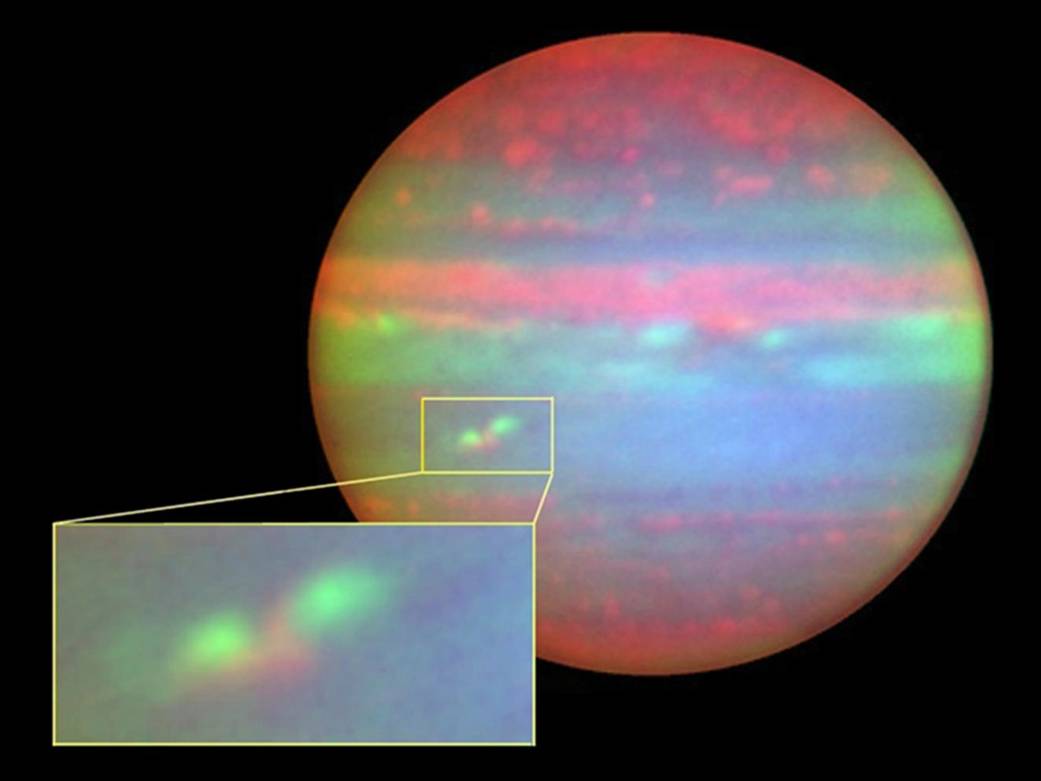This image is a composite of three color images taken on Nov. 16, 2010, by NASA’s Infrared Telescope Facility in Mauna Kea, Hawaii. The images used to make the composite show three different parts of the infrared spectrum – 4.85 microns (red), 4.00 microns (green) and 1.58 microns (blue). At 1.58 microns, scientists see sunlight reflected from Jupiter’s main cloud deck – the same clouds they see in visible light. At 4.00 microns, scientists see sunlight reflected from higher-altitude particles well above the main deck. At 4.85 microns, scientists see thermal emission arising from the tops of Jupiter’s clouds, with the hottest emissions coming from the deepest atmosphere and signifying regions with minimal overlying cloud cover.
The region just to the left of the center, and expanded in the insert, shows the area of the South Equatorial Belt with an unusually bright spot, or outbreak. The particles lofted by the initial outbreak are easily identified in green as high altitude particles at the upper right, with a second outbreak to the lower left. Between them, in red, is a region of clear atmosphere that shows up as a reddish color in the image.
Image credit: NASA/JPL-Caltech/IRTF/UC Berkeley
1 min read



























